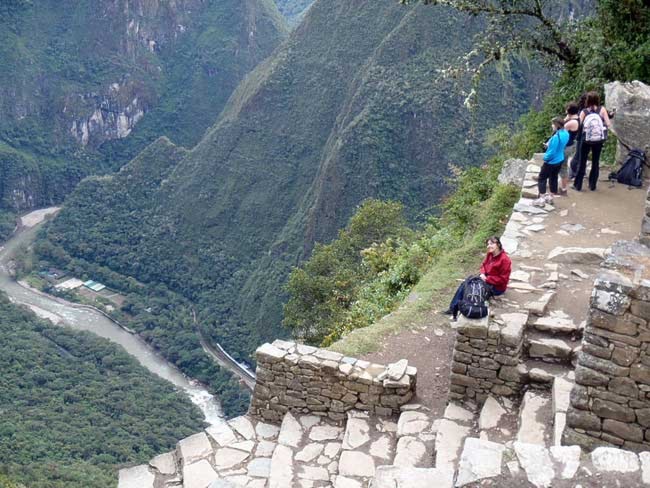The guinea pig has long been a great educational tool.
In the right classroom, the adorable little rodent can teach students responsibility and how to care for animals.
But the senior students in Ecole Emilie-Tremblay’s high school program, Academie Parhelie, have found another use for the guinea pig.
They can teach you a lot about foreign cultures.
And they’re delicious, especially served up with a side of rice.
“It wasn’t too great,” said Alexis Miller a Grade 11 student at Emilie-Tremblay.
“And it’s sad because it’s all there, the feet, the teeth, like they just stuck it in the oven.”
“And after that we visited a guinea pig farm,” added her classmate Izak Baril-Blouin.
Five students developed a taste (or distaste) for roasted rodent on a recent trip to Peru.
The whirlwind class trip ran from May 1 to 21, and took students throughout the country. The students visited Lima, Cuzco, Machu Picchu, Huacarpay and Chincha Alta.
Along with Baril-Blouin and Miller were fellow students Valerie Herdes, Phillip Gauthier-Landry and Julie-Anne Harvey.
But the trip wasn’t just a culinary adventure.
The class did a lot of volunteer work, first in the small village of Huacarpay where they helped renovate a school.
None of the students had much experience with construction - but in Peru not much was needed.
A roof that they repaired was made out of cattails, collected from a nearby lake.
“You don’t need to be a journeyman carpenter to put that together,” said Baril-Blouin.
The school they built wasn’t a regular school, said Herdes.
“It was a special organization to teach the kids sustainable development,” she said.
“They don’t just learn math and Spanish, they learn personal values and stuff that they don’t learn at home, like how to compost and how to recycle. No one in Peru recycles, but at that school they do.”
One of the first thing that struck the students upon landing in Peru was that the country has different ways of dealing with waste.
“Lima stinks, it really smells, there are open sewers and dogs everywhere,” said Baril-Blouin.
“Out there, you can bring your garbage and throw it into the ocean and that’s normal. A toddler playing in a pile of garbage is nothing to be alarmed about. It’s different up here.”
But it wasn’t all bad.
Other than the guinea pigs, the students loved the food.
And they loved the people.
“The people were very friendly,” said Baril-Blouin.
“Some of them were pretty poor, but here people who don’t have a lot are sad and miserable, but there they’re still happy and enjoy life more than here.”
“The smallest things will make them so happy,” added Herdes.
At the first school the students volunteered at, kids would come to classes from the surrounding mountains and return home for the weekends - some had to walk up to 30 kilometres.
The young students at the school would follow the Yukoners around as they did their work. But communication was difficult.
Emilie-Tremblay offers an hour of Spanish a week for eight weeks leading up to the trip, but classes would sometimes be cancelled to make room for other classes.
Needless to say, their Spanish was pretty basic.
But after three days in Huacarpay, the students did a week-long intensive Spanish course - studying the language six-hours a day
After that week, the students were still a little shy about speaking Spanish, but they could understand a lot more.
The stronger command of the language, made the next stint of volunteering in the Afro-Peruvian village of Chincha Alta all the more enjoyable.
The students volunteered in the local high school in the mornings.
In the afternoon, they’d go to different homes and build gardens for the kids to tend as part of a global project called Tierra de Ninos, which aims to make kids realize how nature affects them, why its important and what they can produce if they care for it.
The students and their teachers did manage to fit in a little sightseeing.
They especially enjoyed Machu Picchu, which the students alternately describe as “mind-blowing” and “crazy.”
Surprisingly perhaps, the students seem to prefer the volunteer work they did over tourism.
“You feel like you’re doing something useful; you’re not just a tourist,” said Baril-Blovyn.
“Tourism is fun, but with the volunteer work you feel like you’re doing something good. You’re not just giving them money; you’re building something that lasts a little longer.”
Contact Chris Oke at
chriso@yukon-news.com
